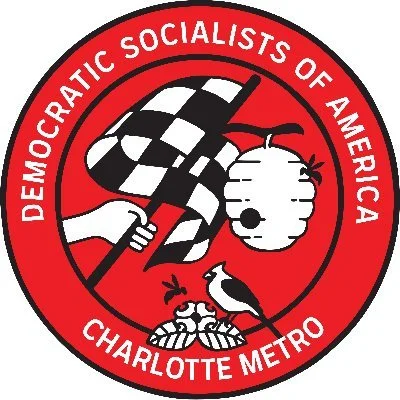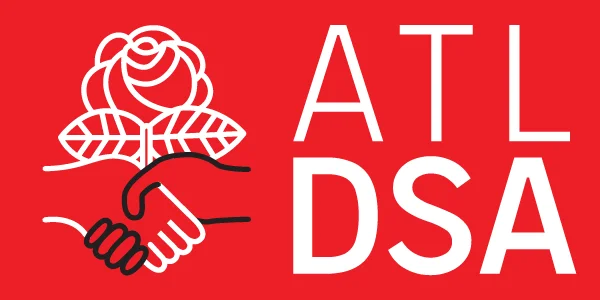

Jewish Traditions of Socialism W/ Rabbi Andy Bachman


From Protest To Politics - A Conversation about Bayard Rustin w/ John D'Emilio


The End of the World, As We Know It: Faith and Ecosocialism beyond Apocalypse


North Carolina Demands that Every Vote be Counted!
Trump and the Far Right are doing everything they can to subvert the will of the people. We must be prepared to fight any effort to subvert the democratic will of the working class. We cannot allow the Republican party to disenfranchise people with the same Jim Crow playbook they've been using for generations in order to continue their deadly authoritarian agenda on every level of government.
Sign the pledge now to show your support for counting every vote and are willing to mobilize if any attempts are made to steal the election. Add your name now to pledge your commitment to take action to ensure that every vote is counted.
No matter what happens, we will continue to fight for democracy, Medicare for All, a Green New Deal, and more. A better world is possible.
The Democratic Socialist of America Chapters of North Carolina
Asheville DSA
Charlotte Metro DSA
Greensboro DSA
Piedmont DSA
Wilmington DSA
Winston Salem DSA


Local DSA Members Debut Equal Time Radio (the Podcast)
Looking for an in-depth analysis of current events in Vermont and nationally, from a Left and Labor perspective? Check out Equal Time Radio with DSA member Traven Leyshon. Equal Time began as a progressive initiative driven by State Senator Anthony Pollina back in 2007, who saw the lack of a strong Leftist analysis of Vermont news and its relationship to the larger national context. Traven, the current host, joined the team shortly thereafter and is a longtime labor activist and Vermonter who is the current president of the Green Mountain Labor Council. This past summer, Traven teamed up with DSA members Dayna Stimson and Anthony Apodaca to transform the weekly radio show into a podcast format.
Equal Time strives to bring greater attention to issues often ignored by the corporate media: working class struggle, the climate crisis, Black liberation, and economic justice, among many important topics. Broadcast weekly, the show has featured writers from Jacobin, Labor Notes, the Economic Policy Institute, DSA, Rights & Democracy, Vermont Workers Center, and Vermont Public Assets, among others. Featured guests include Stephanie Yu, Paul Cillo, Daniel Denvir, Let’s Grow Kids, Bhaskar Sunkara, Alex Vitale, Howie Hawkins, Jill Stein, and David Zuckerman. Traven uses his extensive experience as a Leftist to bring greater insight and understanding to the issues currently facing us, as he talks to the people shaping the movement locally and nationally.
Listen and subscribe to Equal Time Radio on Apple Podcasts, Spotify, or Stitcher. You can also subscribe to our newsletter to make sure that you never miss an episode release! Learn more at equaltimeradio.transistor.fm.


Metro Atlanta DSA guide to Georgia Referendums!
This November, Georgia residents will vote on two constitutional amendments and a referendum. Many of our members have requested a guide to help clarify these. Two members of MADSA’s electoral working group, Eli and Jim, did the research and put together a guide to explain the ballot initiatives, including a list of pros and cons of each from a socialist perspective. Two additional referendums from the Dekalb and Gwinnett county ballots are described as well.
In addition, MADSA has endorsed Zan Fort for Georgia’s 39th Senate District Special Election! Our work will continue beyond November to build a movement that fights for working class interests, but in elections and outside them. Join MADSA if you want to be involved!
If you have any questions or concerns about our voter guide or larger electoral work, feel free to reach out at electoral@madsa.ga


How Faith Traditions Can Strengthen Socialist Movements w/ Bhaskar Sunkara & Rev. Andrew Wilkes


MADSA votes to endorse Zan Fort
The Metro Atlanta Democratic Socialists are excited to announce their endorsement of Zan Fort for Georgia’s 39th Senate District.

What is the 39th Senate District race?
With Nikema Williams leaving this seat to fill John Lewis’ former seat, District 39 residents will vote on November 3rd to fill her seat in the 39th district.
Early voting in Georgia begins October 12.
What is the 39th district?
District 39 spans west Atlanta (view a map here). Visit your GA My Voter page to confirm your district.
Why are we supporting Zan Fort?
Zan is a lifelong Atlanta resident with a long family history of union membership and ties to the Democratic Socialists of America. Zan’s platform includes progressive policies such as:
- A $15 minimum wage
- Medicare for All (pushing to expand Medicaid in GA and protecting the ACA until we can pass Medicare for All federally)
- An extended moratorium on COVID-19 evictions
- Banning violent police practices such as chokeholds, no-knock warrants, and ending qualified immunity.

Get involved by joining #local_elections_wg on Slack (or email membership@madsa.ga if you don’t have Slack access yet), or look for the latest text banking and canvassing events in our newsletter!


Building Inclusive Movement for Economic Justice

